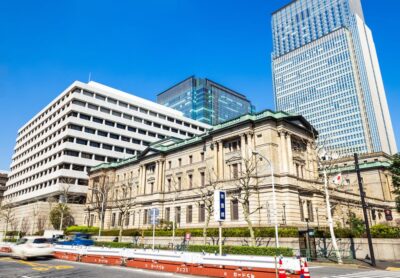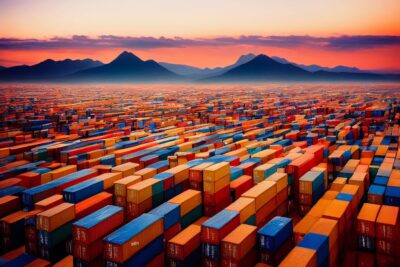Ten Years of BOJ Governor Kuroda & The Result of Extraordinary Monetary Easing
 Haruhiko Kuroda stepped down as Governor of the Bank of Japan on the 8th of this month after serving for 10 years since 2013. He launched an extraordinary monetary easing program to end deflation and adopted a negative interest rate policy, but it failed to boost the economy. 4 million more jobs were created, but the increase was mainly among women and the elderly.
Haruhiko Kuroda stepped down as Governor of the Bank of Japan on the 8th of this month after serving for 10 years since 2013. He launched an extraordinary monetary easing program to end deflation and adopted a negative interest rate policy, but it failed to boost the economy. 4 million more jobs were created, but the increase was mainly among women and the elderly.
The information that a minimum of 20 million yen was needed as a retirement fund caused great anxiety among many citizens about their retirement life. In order to secure such funds, both housewives raising children and retirees started to look for jobs. I think that is the truth of the employment expansion, and if it is the fact, it is natural that our salary would not increase, isn’t it?
In April 2014, the next year Governor Kuroda took office, the consumption tax was raised from 5% to 8%. Then it was finally raised to 10% in October 2019. To make matters worse, long-term care insurance premium is relentlessly deducted from the limited pensions of retired elderly people.
I believe that the strong yen was a factor of the failure to achieve the 2% price stability target that Governor Kuroda insisted on until the very end. The yen’s appreciation against the dollar, $1.00=Yen 115-120, is thought to have pushed down import prices and stabilized consumption prices. Fluidity of employment was also a factor in retaining salary increases.
At the end of FY2022, the government has 1029 trillion yen in outstanding government bonds, more than twice the scale of GDP. This is the result of the Bank of Japan underwriting half of the government bonds issued by the government and distributing cash throughout the market for the purpose of monetary easing at an unprecedented level. When interest rates must be raised in earnest to counter inflation in the future, the BOJ will be forced to make very high interest payments and the price of JGBs will fall.
In March 2022, U.S. Federal Reserve Board Chairman Jerome Powell decided to lift the zero-interest rate policy that had been in place for two years and to raise the policy rate by 0.25% in an effort to curb historically high inflation. This is because the global economy has become increasingly concerned about inflationary pressures in anticipation of higher energy prices due to Russia’s invasion of Ukraine. Major countries followed the U.S. in raising interest rates, also a self-defense measures to protect their own currencies.
However, Governor Kuroda, persisting in monetary easing, did not raise interest rates. As a result, Japan experienced an unprecedented depreciation of the yen, from $1.00=Yen 115 in March 2022 to $1.00=Yen 148 in late October, a 29% depreciation. Consequently, the trade balance posted deficits in the range of 400 billion yen to 2.7 trillion yen each month from March 2022 to February 2023. On the other hand, the sharp and record-high depreciation of the yen has given companies the green light to pass on the higher costs of a weaker yen to their sales prices. Consumers had no choice but to accept it.
BOJ Governor Kuroda’s bazooka gun ran out of bullets in the end, leaving a huge deficit for the country and putting the people in a hard life. Economic policy has its limits. We believe that the best way to improve the economy is to provide the people with factors that will ultimately brighten their spirits. We would like the successor, Governor Kazuo Ueda, to make that correction promptly.
Revive Japan’s Economy by Utilizing Retained Earnings.
Corporations achieved retained earnings of over 500 trillion yen in FY2021, a record high for the 10 consecutive years. By industry wise, the retained earnings increased by 10.9% in the manufacturing sector, and 4.4% in Non-manufacturing sector. By company size, those with capital of 1 billion yen or more increased 5.9%, while those with less than 10 million yen decreased 3.6%, and large manufacturing companies are more likely to benefit from the weak yen. We sincerely hope that companies with retained earnings will invest their retained earnings into human resources to wake up Japan from the slumber of the past 30 years, create innovation, and put Japan back on track for the growth strategy.
U.S. Economy on Track for Recovery in Both Employment and Trade
 According to the March employment report released by the U.S. Department of Labor on March 7th, the number of nonfarm payrolls increased by 236,000 from the previous month and the unemployment rate fell to 3.5% from 3.6% in February. Average hourly earnings rose 0.3% from the previous month, a slight acceleration from February’s 0.2%, bringing year over year increase to 4.2%. The U.S. economy seems strong.
According to the March employment report released by the U.S. Department of Labor on March 7th, the number of nonfarm payrolls increased by 236,000 from the previous month and the unemployment rate fell to 3.5% from 3.6% in February. Average hourly earnings rose 0.3% from the previous month, a slight acceleration from February’s 0.2%, bringing year over year increase to 4.2%. The U.S. economy seems strong.
The National Retail Federation (NRF) released its latest forecast for container imports at major U.S. ports on July 7th. It forecasts 1.55 million TEU (-26.8% y/y) for February imports, 1.68 million TEU (-28.2% y/y) for March, 1.86 million TEU (-18.0% y/y) for April, 1.91 million TEU (-20.1% y/y) for May, 1.99 million TEU (-11.8% y/y) for June, 2.10 million TEU (-39.0% y/y) for July, and 2.13 million TEU (-5.9% y/y) for August. With more than 2 million TEUs expected for July, the market is on a recovery track toward the second half of the year.
Trends in Standby Vessels and Container Freight Rates
According to Daily Cargo (quoted from maritime research firm Alphaliner), there are 299 container vessels on standby, or 1,459,107 TEU in vessel space basis as of March 27th, and standby container vessels account for 5.5% of all vessels in operation, down 0.5 points from March 13th. The number of standby container vessels peaked at the end of February and has been on a downward trend since the beginning of March. We believe that the main reason for this is that containerships are being deployed back in operation as services resume after the Chinese New Year. 120 container vessels with total 606,943 TEU are commercially inactive and standby, and 179 vessels with 852,164 TEU are under repair and maintenance.
According to the freight rate index released on April 6th by Drewry, a UK maritime consultancy, the freight rate index for eight major routes on Asia/Pacific, Asia/Europe, and Atlantic were flat from last week, but still maintaining 20% higher than 2019 average of $1,420 per FEU, pre-COVID-19 level. We expect them to remain stable over the next few weeks.
| Container Freight Index by Drewry | |||
| Route | April 6th, 2023(US$/FEU) | Week-on-Week | Year-on-Year |
| Composite Index | $1,710 | 0% | -79% |
| Shanghai/Rotterdam | $1,532 | 4% | -86% |
| Shanghai/Los Angeles | $1,736 | -2% | -80% |
| Shanghai/New York | $2,500 | 0% | -78% |
Negotiations for Service Contract (SC) renewals for the current fiscal year on North America routes appear to be in the final stages. Competition between shipping lines and NVOCCs is intense, and in some cases, SC rates have fallen by 50% or more from the previous year, and it seems shippers are securing favorable terms. Some shippers have secured $1,200 per FEU from Asia to the West Coast of North America, reducing ocean freight rates by $10-200 million from the previous year, which suggests that shipping lines are still facing tough price negotiations.
New container price for March 2023
New container production in March totaled 151,027 TEU (Dry: 128,400 TEU, Reefer: 22,627 TEU). The factory inventory was 953,401 TEU (Dry: 883,765 TEU, Reefer: 69,636 TEU), and total 130,335 TEU (Dry: 114,925 TEU, Reefer: 15,410 TEU) were shipped out of factories. The March production prices will be reported in May, as container price compile has been delayed due to the small number of containers being purchased by various customers.
Shipping Lines Suffering from Excess Container Inventory
 Currently, the issue of surplus container inventory by shipping lines has not yet been resolved. It will probably continue through the end of this year or for a while after that. Many shipping lines are having difficulty returning excess leased containers. Depots of leasing companies around the world do not have enough space to accept the full number of containers leased by leasing companies. This problem is serious in North America and Europe. Therefore, shipping lines are positioning empty containers to cargo export areas such as China, Asia, and Japan. In off-dock depots in China port areas, containers are stacked in seven-tier, and it is said that more than 90% of the available space has already been filled.
Currently, the issue of surplus container inventory by shipping lines has not yet been resolved. It will probably continue through the end of this year or for a while after that. Many shipping lines are having difficulty returning excess leased containers. Depots of leasing companies around the world do not have enough space to accept the full number of containers leased by leasing companies. This problem is serious in North America and Europe. Therefore, shipping lines are positioning empty containers to cargo export areas such as China, Asia, and Japan. In off-dock depots in China port areas, containers are stacked in seven-tier, and it is said that more than 90% of the available space has already been filled.
During the three years of the COVID-19 Disaster (2020, 2021, and 2022), the number of empty containers that shipping lines failed to shift from North America and Europe to China, an export demand area, or in other words, the total number of newly built containers picked up by shipping lines from China exceeded 12 million TEU. Not all, but more than half of them were taken in excessively to secure high freight rates. It will take a considerable amount of time for shipping lines to solve the problem of excess container inventory, especially under the circumstances that the off-hire locations of leased containers are limited.
20f Container Shortage in China! Background and Future Prospects
On the other hand, there is currently considerable demand for 20f containers in China. This may be due to the fact that export cargo from China is becoming smaller and weight basis. The absolute number of 20f containers is much lower than that of 40f HCs, as shipping and leasing companies have been holding back on ordering 20f containers in the past. Of course, empty positioning of 20f containers from Europe and the U.S. also has a lower priority, and this is likely to be the factor. With exports from China in the doldrums, we are very pleased to hear 20f container is short in China. Shipping and leasing companies will then focus on positioning empty containers from Europe, the U.S., or nearby Japan to fulfill the demand. Orders for new containers will also increase. However, if all of them are put on the market at once, market prices will decline due to the supply-demand balance. If possible, such a similar mistake should be avoided.
As I recall, one year after the Lehman Shock in September 2008, a shipping company placed an order for 2,000 of 20f long-term leases in Shanghai, and the economy recovered quickly from the Lehman Shock. Taking this into consideration, can the current increase in demand for 20f in China be the evidence that the global economy is recovering after the COVID-19 pandemic and the lifting of China’s “zero-COVID policy”? We can only hope so.
(Translated by Ms. Chizuru Oowada)